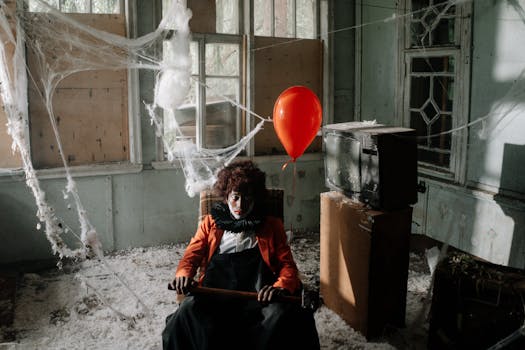Movies
How Biographical Films Balance Truth and Drama
Explore how biographical films blend historical accuracy and dramatic storytelling. Learn the strategies filmmakers use to stay true to real lives while captivating audiences with compelling cinema.
Advertisement
Some films leave us debating what really happened long after the credits roll. That’s never more apparent than in movies that turn real lives into riveting stories, such as biographical films.
Filmmakers know there’s tension in recreating the past. Audiences crave accuracy, but they also want cinematic drama. Biographical films walk that fine line with every scene, every line of dialogue, and every learned detail.
This article unpacks how biographical films thread historical truth and compelling fiction together, guiding you through choices, tradeoffs, and the strategies that shape unforgettable movies about real people.
Fact-Checking Protocols Elevate Biographical Films’ Credibility
Directors and producers reinforce trust by following strict research protocols before a single shot is filmed. These steps elevate the work and help defend creative liberties to skeptical audiences.
When tackling biographical films, teams rely on archives, interviews, and legal clearances. Authenticity isn’t accidental—it’s constructed layer by layer with intent and care.
Scripting with an Archivist’s Mindset
Screenwriters consult historical documents, transcripts, and personal letters. Pulling direct quotes preserves a person’s voice. For example, when a screenwriter says, “Let’s use her exact testimony for this scene,” they’re safeguarding the story’s core.
Producers cross-reference script passages against primary sources. In tight deadlines, a quick verification—”Did this actually happen on that date?”—helps maintain integrity without stalling the process for weeks.
This mindset supports biographical films by ensuring key moments anchor the drama in verifiable events, while still allowing cinematic flourishes between them for pacing and mood.
Consultation with Real-Life Insiders
On-set advisors—family members, colleagues, or historians—scrutinize dialogue, mannerisms, and settings. If someone notes, “They’d never wear that tie,” corrections are immediate.
Actors benefit from first-hand accounts. Observing habits or listening to stories about emotional triggers gives performances an extra layer of believability that resonates with viewers.
As a result, biographical films turn surface-level resemblances into genuinely evocative portrayals, bridging unfamiliar audiences with the subject’s real environment.
| Area of Research | Typical Sources | Who Consults Them | Next Action for Filmmakers |
|---|---|---|---|
| Historical Records | Archives, court transcripts | Writers, directors | Validate key events and dates |
| Visual Evidence | Photos, home videos | Production designers | Recreate accurate sets/costumes |
| Personal Accounts | Interviews, memoirs | Actors, script consultants | Embody realistic behaviors |
| Legal Rights | Agreements, copyright | Producers, lawyers | Secure approvals and avoid lawsuits |
| Cultural Accuracy | Community leaders, historians | Cultural consultants | Ensure authentic traditions/context |
Intentional Departures from Fact Fuel Cinematic Impact
When framing biographical films, directors sometimes alter real events for clarity or pacing. Each change is a choice: sacrifice strict accuracy to evoke stronger emotions on screen.
Filmmakers announce—even defend—these changes in interviews, explaining, “We had three hours to show a lifetime.” This transparency can foster audience buy-in, if handled thoughtfully.
Combining Characters for Simplicity
Instead of depicting six secondary allies, scripts might blend them into one. This composite character makes the narrative manageable while retaining the gist of real support networks.
If a director mentions, “She’s an amalgamation of two secretaries,” attentive viewers see this as a tool for storytelling, not deception, and can appreciate the creative efficiency behind it.
- Draft composite characters to condense relationships. It prevents confusion and speeds up plot development, but clarify in press materials to maintain trust with detail-oriented fans.
- Merge backstories only if core motivations stay true. Toss extraneous details, but ensure emotional logic still matches authentic historical accounts for noticeable realism.
- Skip superficial resemblances—focus on behavioral accuracy. A character who acts believably is more convincing than one who simply looks the part, especially for biographical films focused on impact.
- Mark significant decisions where composites appear in the script. Share these changes with stakeholders to avoid confusion during production or feedback sessions.
- Always document changes in supplementary materials like DVD extras so audiences know what’s fact vs. streamlined fiction—this strengthens long-term credibility for biographical films.
Ultimately, selective simplification helps filmmakers keep biographical films accessible to newcomers without overwhelming them with too many names or subplots.
Creating Dialogue True to Spirit, Not Wording
Screenwriters face tough choices when real conversations weren’t recorded. They may write, “I’ll stand by you,” signaling loyalty even if those exact words are unproven—staying true to intent rather than transcript.
- Craft dialogue capturing core values, not literal quotes. This immerses the audience in the emotional world of the character without breaking narrative flow.
- Review existing accounts to shape tone. Analyze letters, memoirs, and tapes for verbal tics before inventing scenes, so invented lines fit established personality patterns in biographical films.
- Share drafts with advisors for feedback. Corrections from those close to the subject add another layer of quality control, signaling respect for the source material.
- Avoid contemporary slang. Period-appropriate phraseology prevents a jarring sense of anachronism that could distract audiences and spark criticism after releases.
- Document decisions about invented dialogue. Explain choices in production notes so future researchers understand the film’s rationale and intent, especially in educational biographical films.
Focusing on emotional truth over literal accuracy draws viewers deeper, ensuring the film delivers resonance even in scenes where verbatim transcripts simply don’t exist.
Performance Choices Forge Lasting Connections with Audiences
Actors shape how biographical films are received by revealing subtle details about a real person’s mindset. Each performance element—gesture, accent, inflection—cements an audience’s emotional bond with the subject.
Physical tics and emotional reactions, when executed with care, can transport viewers straight into another person’s lived reality. It all hinges on hours of preparation, study, and empathy.
Transforming Research into Performance Details
Main actors devote weeks to dissecting public speeches, private interviews, or even walking patterns. They ask, “Would she have folded her arms here?” Using this physical vocabulary, subtle mimicry becomes powerful storytelling.
Those playing controversial figures weigh intensity and restraint with purpose. Overacting reads as caricature, while underplaying risks dullness. Balanced performances in biographical films highlight tensions under the surface.
For instance, Daniel Day-Lewis as Lincoln used pauses and specific postures mapped from historical accounts, shaping audience impressions with body language that was true to the era and context.
Cementing Psychological Plausibility
Behind each role is a map of the subject’s emotional world. Actors journal motivations—”She’d doubt herself before accepting praise”—building decisions from real interviews or written recollections.
This inward work pays off in close-ups: glance aversions, hesitant smiles, tense shoulders. A micro-expression separates imitation from authentic portrayal, whether in courtroom dramas or quiet home scenes.
For biographical films addressing trauma, such as “A Beautiful Mind,” research into clinical symptoms and contemporary responses ensures depictions aren’t just performative, but profoundly respectful and accurate.
Production Design and Era Details Anchor Films in Time
Authentic settings make biographical films visually immersive, setting the stage for truthful storytelling. Each prop, costume, or scenic backdrop communicates unspoken facts about the era and environment.
Design teams map visual references to build locations matching real-life events step for step. The right wallpaper or a period-accurate car can convey decades of context in one frame.
Scouting and Recreating Authentic Locations
Location managers examine original sites—homes, offices, or streets. If access is blocked, they find similar-looking places and modify them with props. “We need windows like the original apartment,” a director might insist.
Production designers photograph doors, signage, and cityscapes from the appropriate decade. These references guide set construction, color palettes, and the selection of background extras whose costumes match the story’s time period.
Biographical films sometimes use archival photos to inspire layout: “Hang the posters at this angle to match historical images,” a designer directs, ensuring even minor details will resonate with eagle-eyed viewers.
Wardrobe and Personal Artifacts as Story Anchors
Wardrobe teams dig through museums and family collections to match clothing styles. “He always wore blue when nervous,” a sister might reveal. Costumers then reflect that in key scenes for authenticity.
Personal effects—watches, jewelry, letters—get special screen time, grounding the character in reality. Each artifact shown onscreen is selected to signal character growth or social status.
For event scenes, teams review event footage and replicate formal attire with custom tailoring. In biographical films about musicians, for example, accurate concert costumes heighten credibility and fan loyalty.
Audience Perception Shaped by Transparency and Context
When biographical films clarify their creative choices, viewers better appreciate the balance between drama and reality. This transparency, built into press kits or opening credits, recalibrates expectations before the first scene starts.
Some filmmakers add text slides—“Some events have been condensed or fictionalized”—to prepare audiences. This proactive communication controls how viewers engage with and interpret dramatized moments.
Paratextual Guidance for Viewers
Marketing materials highlight deviations. Interviews with cast—”He blended two legal cases into one,” an actor shares—frame narrative changes as a necessary craft.
Social media Q&As or screening events let audiences ask, “Did this really happen?” In response, creators can break down what’s real and why they took certain liberties in biographical films.
These strategies guide audiences to emotional truth without feeling misled, ensuring the film’s impact endures past its runtime.
Framing Devices Communicate Intent
Films start or end with disclaimers—”This story is inspired by real events.” Voiceovers introduce whose perspective shapes the plot, clarifying from the outset that creative choices were deliberate and not arbitrary.
Flashbacks and flash-forwards help manage chronology, alerting viewers to shifts from established fact to plausible speculation. This device prevents confusion and positions the audience as informed participants in the narrative.
Each time the story jumps, a gentle cue—a change in visual style or a supporting text banner—reminds the viewer they’re entering a more impressionistic zone of the biographical films’ subject.
Balancing Emotional Impact with Ethical Responsibility
Films about living or recently deceased figures require extra vigilance; a misstep could spark public backlash or legal trouble. Directors and writers reflect on whether certain depictions dignify the subject and respect surviving relatives today.
Scripts are reviewed for moments that might cross a line—stepping from dramatization into exploitation. Ethical checklists help producers sleep at night, knowing their film respects boundaries.
Weighing Sensationalism Against Dignity
Producers ask, “Does showing this advance understanding, or just shock?” Before staging intense scenes (such as addiction or violence), teams consult families and legal teams, ensuring choices feel justified and humane.
Delicate personal revelations must serve character growth. A scene about illness or identity, if handled with nuance, offers catharsis instead of spectacle, aligning the biographical film with a higher standard of storytelling ethics.
When missteps prompt negative press, responsible filmmakers issue clarifications, explaining the process before and after release, boosting audience trust in their biographical films’ intentions.
Case-by-Case Decision Paths
Each project lays out explicit questions for the creative team: “Would the subject or their loved ones recognize this portrayal? Are any facts misrepresented for drama?”
Producers adjust shooting plans if scenes risk overstepping, choosing to fade to black or shift perspectives as needed. Directors preempt controversy with careful script supervision and respectful dialogue on set.
Ultimately, responsibility means knowing when dramatic effect serves the truth, and when restraint serves dignity—a lesson relevant to anyone making or watching biographical films.
Lasting Lessons from the Balance of Fact and Flair
Every biographical film must thread an invisible needle between documenting life and dramatizing it for screens big and small. This tightrope walk demands thoughtful compromise, transparency, and relentless attention to craft.
For viewers, the most memorable biographical films both educate and entertain, cultivating empathy with the subject while keeping historical context in plain sight throughout the narrative.
As you next engage with a great biographical film, watch for those small details—a nervous gesture, a pivotal location, or a disclaimer in the credits—that reveal just how hard filmmakers work to honor both truth and drama.
Trending Topics

Why Some Movie Franchises Last and Others Fade
Analyze movie franchises that sustain relevance through storytelling evolution while others fade into memory.
Keep ReadingYou may also like

How Sound Design Shapes the Emotional Power of Film
See how sound design in film shapes emotion, builds tension, and transforms simple moments into unforgettable cinematic power.
Keep Reading


